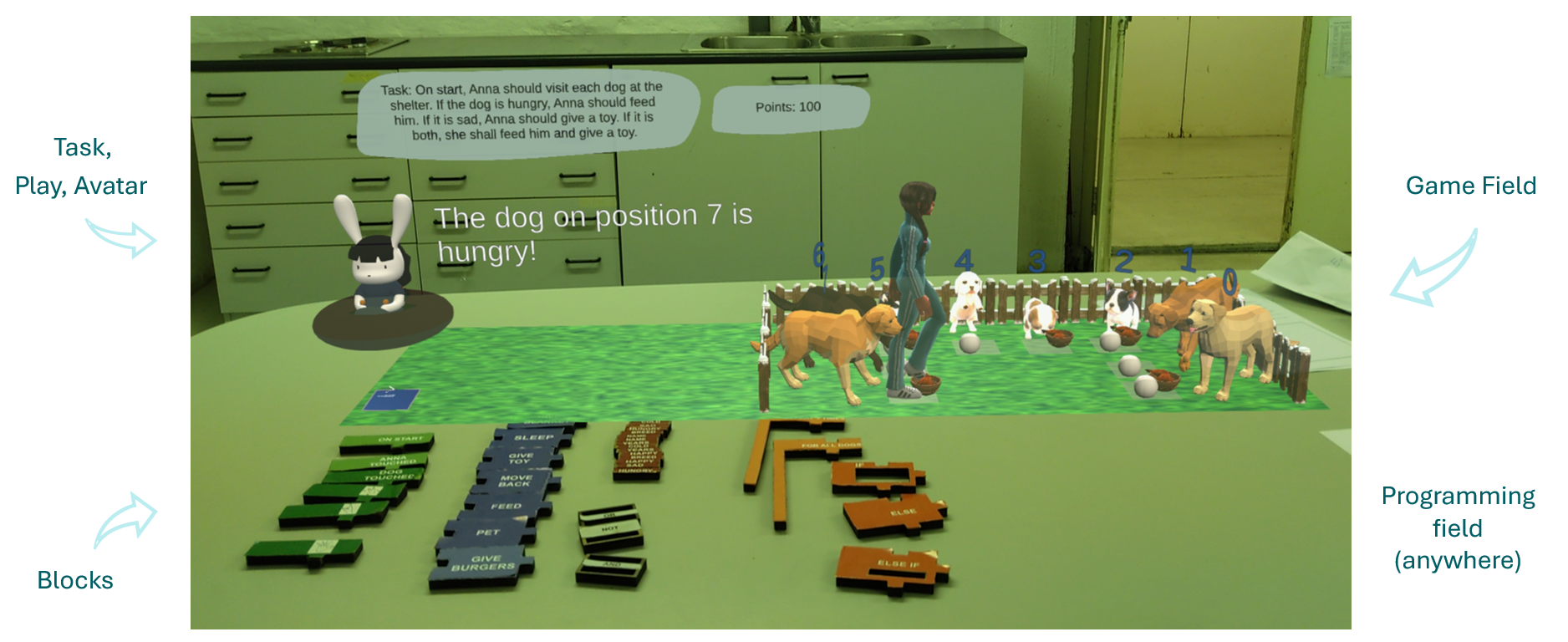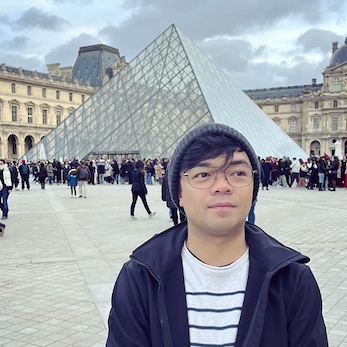Novice Programmer Trainings using Mixed Reality Blocks
pARt Blocks: Programming with Physical Tangible Blocks and AR
This is a research collaboration with Karolina Trajkovska, Maheshya Weeransinghe, Klen čopič Pucihar and Matjaž Kljun.

Computer programming is a demanding task requiring users to understand a syntax of a programming language, logic flows, and complex abstract concepts. Adult users commonly start learning how to program in a text-based programming environment. However, such tools are not optimal for children as they require understanding of a high level of abstraction. Instead, visual programming languages were developed to hide the syntax and error messages, but are still capable to teach concepts such as parallelism and event handling. Despite, these languages still require children to handle virtual block-like elements on a computer screen. In this research, we examine the feasibility of teaching young children programming using physical blocks coupled with Augmented Reality (AR). To this end, we conducted a between subject design study with 8 participants. We compared a traditional 2D desktop application for visual programming to a 3D setting with tangible physical programming blocks coupled with a Head Mounted Device displaying programming results as AR content. The preliminary results show that the immersive 3D learning environment scored better in mental effort, task completion time, performance and subjective user satisfaction. The results should be validated with a larger sample size.
Update! Our paper was accepted and was presented in the recent HCI 2022 Conference. Open access PDF can be found here.
